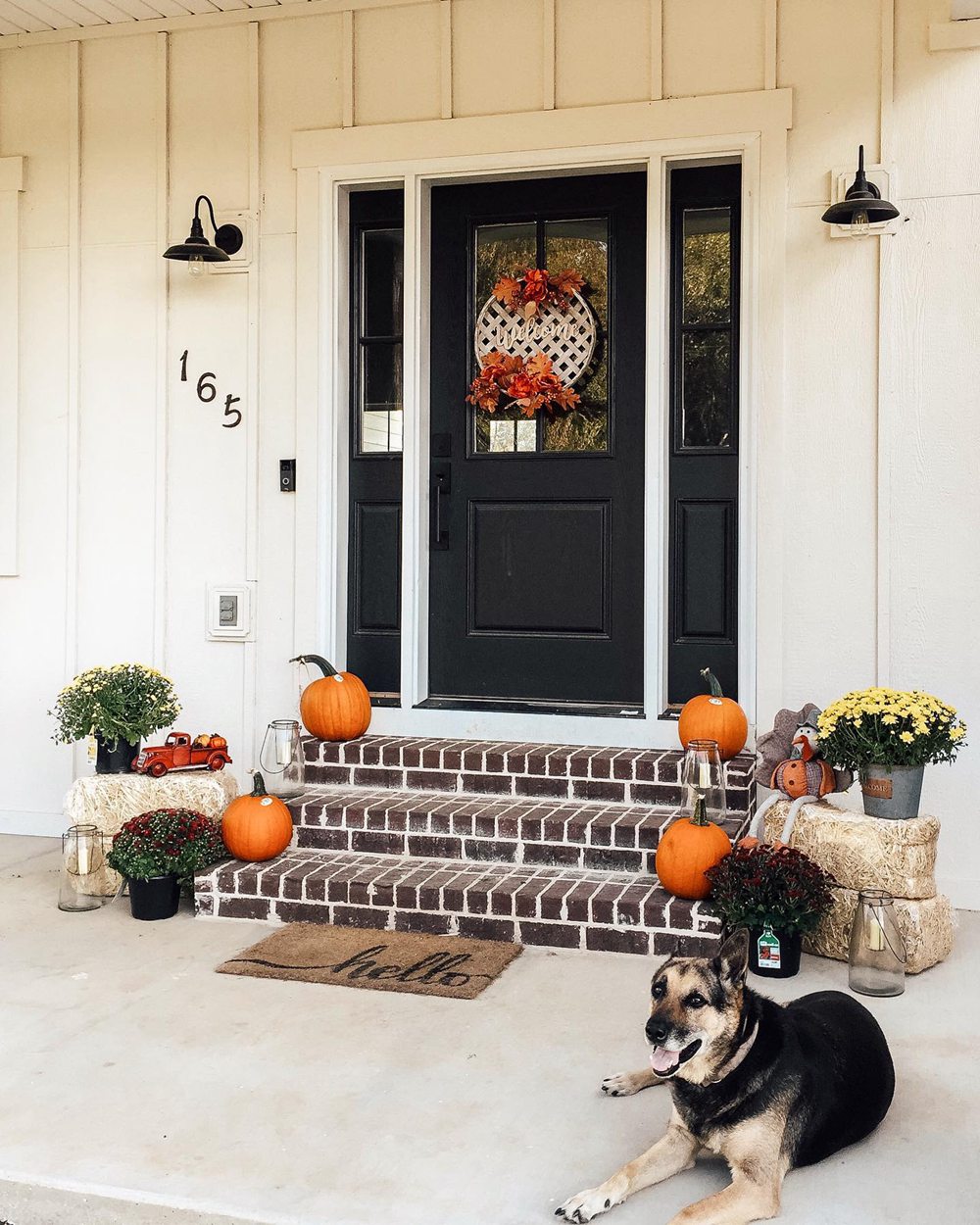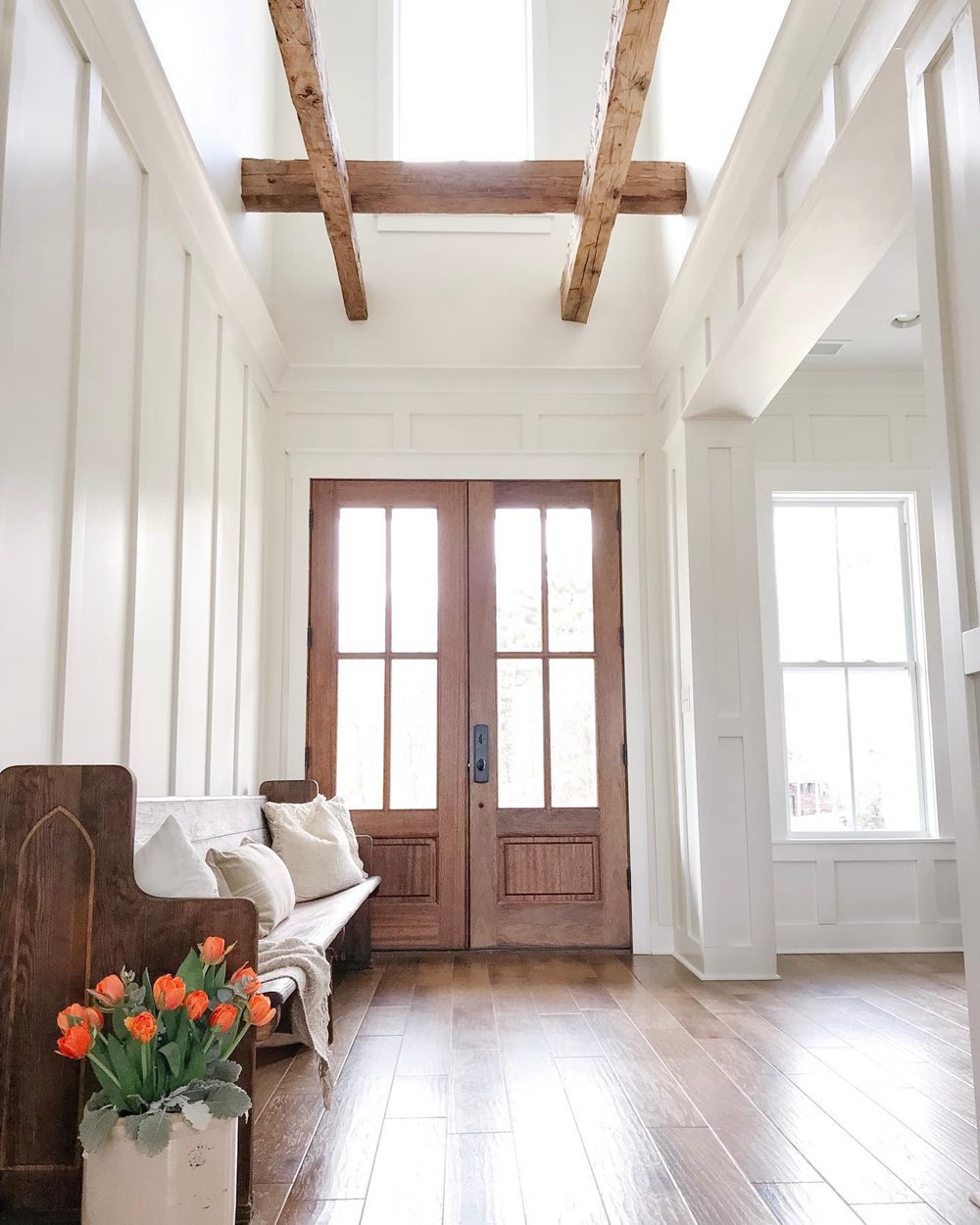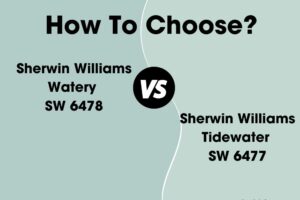When selecting a refined white paint color, two popular options from Sherwin Williams are Shoji White SW 7042 and Alabaster SW 7008. At first glance, these two whites may appear very similar. But looking closer, there are noticeable differences between Shoji White and Alabaster that impact the overall aesthetic.
In this in-depth guide, we’ll compare Sherwin Williams Shoji White vs Alabaster paint colors. We’ll examine undertones, LRV levels, real-world photos, and ideal room applications. By the end, you’ll understand how Shoji White and Alabaster differ and which pristine white is the perfect choice for your space.
Table of Contents
Key Differences Between Shoji White and Alabaster
Before diving into all the details, here is a brief overview of how Sherwin Williams Shoji White and Alabaster differ:
- Undertones: Shoji White is a warm white, Alabaster is a cool white.
- LRV: Alabaster has a higher LRV of 82, Shoji White is slightly darker at 74.
- Use: Shoji White works well whole-home, Alabaster best for accents.
- Rooms: Shoji White excels in living spaces, Alabaster shines in bathrooms.
Now let’s explore the comparison between Sherwin Williams Shoji White SW 7042 and Alabaster SW 7008 more closely!
Sherwin Williams Shoji White SW 7042
Shoji White SW 7042 is a beautiful warm white paint color with an open, tranquil vibe. It provides flexibility as a versatile neutral.
Here are some key details about Shoji White:
- LRV: 74
- Undertones: Warm white, hint of cream
- Sheen: Available in all finishes
- Rooms: Living rooms, bedrooms, offices, dining rooms
- Pairs Well With: Tans, grays, blues, greens
Shoji White is a clean white with very subtle undertones of warm cream. The faint warmth gives it a relaxed, serene feel without strong contrast.
With an LRV of 74, Shoji White reflects a significant amount of light to prevent a space from feeling sterile or stark. The creaminess maintains an airy, peaceful ambiance.
This versatile white complements various color combinations. Pleasing pairings include:
- Sherwin Williams Pure White
- Sherwin Williams Mindful Gray
- Sherwin Williams Repose Gray
- Sherwin Williams Silverstrand
While suitable anywhere in a home, this tranquil warm white truly shines when used as the main wall color in living areas, bedrooms, offices, and dining spaces.
Sherwin Williams Alabaster SW 7008
Alabaster SW 7008 is a gorgeous cool white paint color with widespread popularity. Its versatility allows it to work in any style home.
Here are some key details about Alabaster:
- LRV: 82
- Undertones: Cool white, hint of gray
- Sheen: Available in all finishes
- Rooms: Bathrooms, kitchens, trims, accents
- Pairs Well With: Grays, blues, greens, wood tones
Alabaster is a clean, bright white with faint undertones of cool gray. While it reads as a true white, the subtle gray gives it a slightly sharper, more defined edge.
With an LRV of 82, Alabaster reflects a large amount of light to avoid feeling flat or dull. The barely-there grayness adds a touch of crisp freshness.
Some pleasing color combinations with Alabaster include:
- Sherwin Williams Extra White
- Sherwin Williams Agreeable Gray
- Sherwin Williams Mindful Gray
- Sherwin Williams Naval
While suitable anywhere when used properly, this cool crisp white truly excels when strategically placed in bathrooms, kitchens, on trim, doors, and accent walls throughout a home.
Directly Comparing Shoji White vs Alabaster Paint Colors
Now that we’ve explored Shoji White SW 7042 and Alabaster SW 7008 separately, let’s directly compare the two Sherwin Williams paint colors:
Light Reflectance Value (LRV)
Alabaster has an LRV of 82, while Shoji White has an LRV of 74. This means Alabaster reflects a bit more light than Shoji White. However, both reflect ample light and avoid feeling dark or dingy.
Undertones
Here is the biggest difference between the two whites. Shoji White has subtle warm cream undertones, giving it a relaxed, serene vibe. Alabaster has faint cool gray undertones, providing a sharper, brighter feel.
Best Room Applications
Thanks to its versatility, Shoji White works beautifully throughout an entire home, especially in main living areas. Meanwhile, Alabaster excels when used strategically as an accent color due to its hint of cool crispness.
Paint Finishes
Both Shoji White and Alabaster come in any sheen from matte to high-gloss. They can provide soft, elegant finishes or add definition through gloss.
Shoji White vs Alabaster Comparison Chart
Here is an at-a-glance overview of their major differences:
| Paint Color | Shoji White SW 7042 | Alabaster SW 7008 |
|---|---|---|
| LRV | 74 | 82 |
| Undertones | Warm white, cream hint | Cool white, gray hint |
| Use | Whole-home color | Accent color |
| Sheens | All finishes | All finishes |
Real Rooms Painted Shoji White and Alabaster
To better visualize the contrast between tranquil Shoji White and crisp Alabaster, let’s look at real rooms painted in the two white colors:
Shoji White SW 7042
Alabaster SW 7008
The images demonstrate the noticeable difference in warmth between Shoji White and Alabaster. Shoji White has a creaminess, while Alabaster is a sharper white. But their similar lightness can make them seem comparable at first glance.
Should You Choose Shoji White or Alabaster?
So how do you decide between tranquil Shoji White or cool and crisp Alabaster for your home? Here are some tips:
Pick Shoji White SW 7042 if you want:
- A warm white with subtle creaminess
- A relaxed color suitable for whole-home use
- Peaceful sophistication for living rooms and bedrooms
- Gentle tranquility without strong contrast
Choose Alabaster SW 7008 if you want:
- A cool white with a hint of sharpness
- Crisp, subtle contrast for baths, kitchens, and trim
- A clean alternative to warmer whites
- Brightness and definition for accents
If still unsure, get samples of both paint colors and view them throughout the day. The lighting differences will help guide your decision.
Either refined white you select will provide beauty, lightness, and versatility. But their slight differences mean one likely better fits your personal style.
Ideal Room Applications
Here are the rooms that tend to suit Shoji White SW 7042 and Alabaster SW 7008 best:
Shoji White SW 7042
- Living Rooms
- Bedrooms
- Dining Rooms
- Offices
- Entryways
Alabaster SW 7008
- Bathrooms
- Kitchens
- Doors and Trim
- Accent Walls
- Hallways
Both can work beautifully throughout an entire home. But the above applications maximize each white paint color’s strengths.
Design Ideas and Color Pairings
On their own, Shoji White and Alabaster create clean, elegant backdrops. Combined with other colors and materials, they can make truly stunning interiors:
Shoji White SW 7042 Color Combinations
- Sherwin Williams Extra White (trim/ceilings)
- Sherwin Williams Tricorn Black (accent wall)
- Sherwin Williams Mindful Gray (furniture)
- Light wood flooring
Alabaster SW 7008 Color Combinations
- Sherwin Williams Pure White (trim/molding)
- Sherwin Williams Naval (accent wall)
- Sherwin Williams Repose Gray (furniture)
- White quartz countertops
Shoji White vs Alabaster – Which is Best for You?
When selecting between Shoji White and Alabaster, keep your own design preferences and goals in mind:
Pick Shoji White SW 7042 if you want:
- A warm white suitable for whole-home use
- Subtle creaminess with a tranquil vibe
- A peaceful oasis for living rooms and bedrooms
- Gentle openness without strong contrast
Choose Alabaster SW 7008 if you want:
- A cool crisp white for subtle bright accents
- Slightly sharper tone than warmer whites
- Beautiful definition on trims, cabinets, and walls
- A clean, airy, refreshing feel
While the two whites share similarities, their minor differences likely make one a better fit for your particular space and style. Get samples before deciding on Shoji White vs Alabaster.
Frequently Asked Questions
Still trying to determine between tranquil Shoji White or crisp Alabaster? Below are answers to some common questions:
Does Alabaster work well in living rooms?
Yes, Alabaster can work beautifully in living rooms when used thoughtfully on an accent wall or ceiling trim to add definition.
What colors complement Shoji White walls?
Shoji White pairs nicely with deeper blues, grays, greens, and tans. Crisp white trim and a black accent wall provide nice contrast.
Which white paint color is lighter?
Alabaster has a slightly higher LRV of 82 vs the 74 LRV of Shoji White. However, the minute difference is barely discernible.
Can you use Shoji White in a bathroom?
Definitely. Paired with white tile, Shoji White provides a relaxing spa-like ambiance in bathrooms. Its subtle warmth is welcoming.
Is Alabaster suitable for kitchen cabinets?
Yes, Alabaster looks gorgeous against white countertops in kitchens! Its hint of cool gray adds definition without feeling clinical.
Conclusion
When comparing Sherwin Williams’ Shoji White SW 7042 and Alabaster SW 7008 paint colors, the main differences come down to undertones and aesthetics:
- Shoji White is a warm white suitable for whole-home use, providing a tranquil, serene vibe.
- Alabaster is a cool white that excels as an accent, adding crispness and definition.
While the two whites share similarities, their unique undertones make one likely better suit your goals. Carefully consider your needs when deciding between Shoji White and Alabaster. Getting samples will ensure you select the perfect sophisticated white for your space!


















